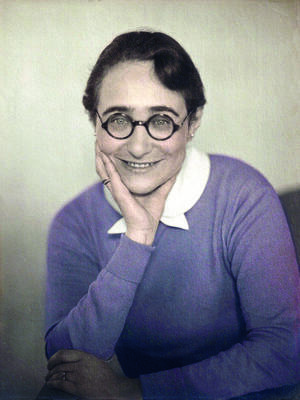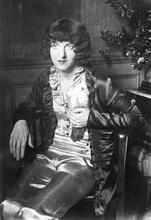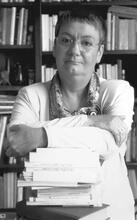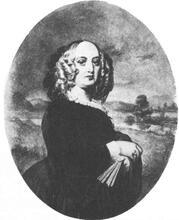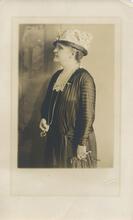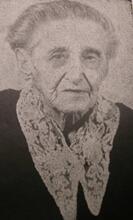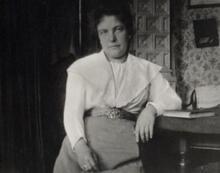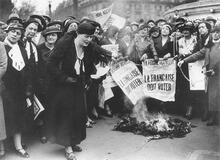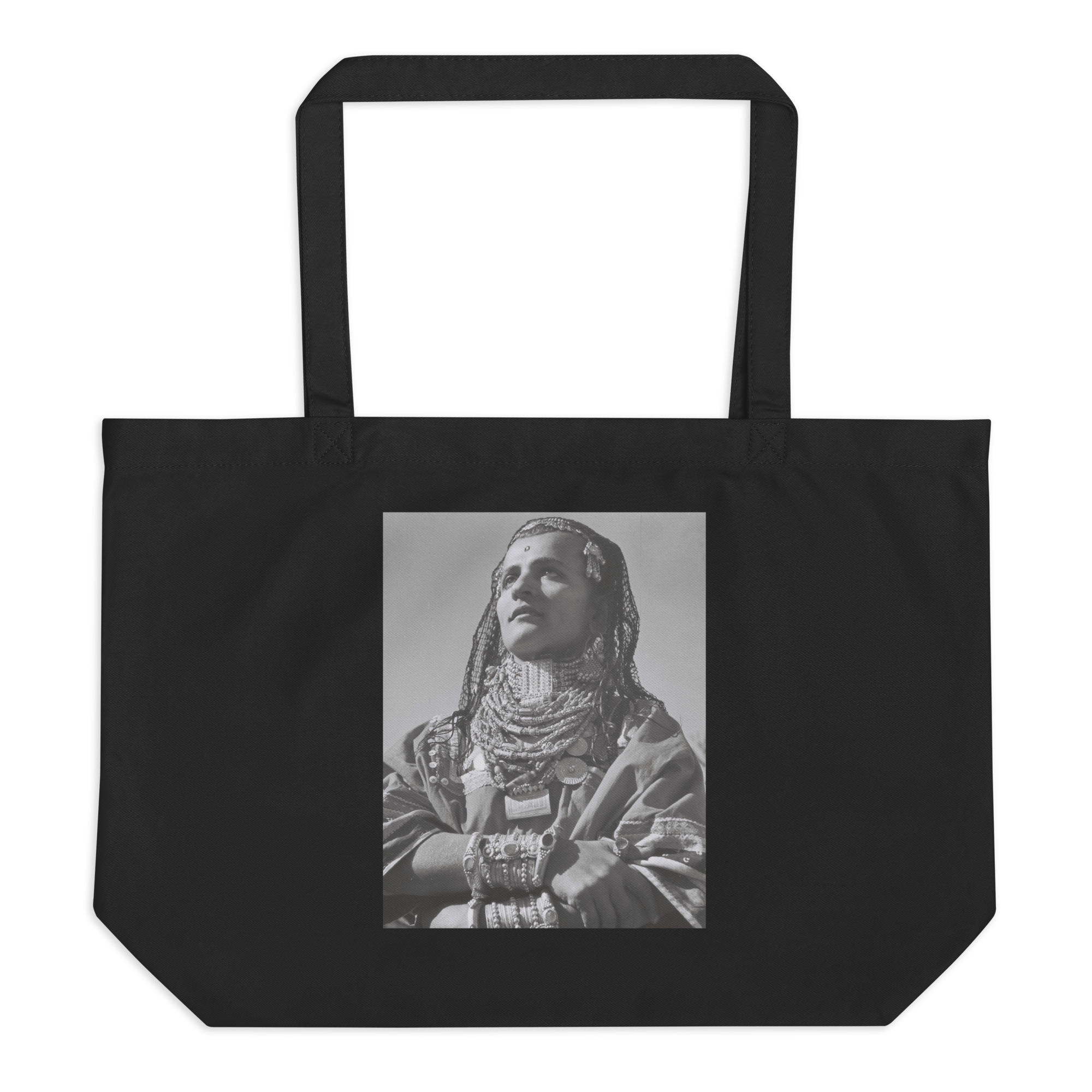Gabriele Tergit
Gabriele Tergit was a prominent journalist in 1930s Germany and one of the great chroniclers of German-Jewish life. Tergit rose to prominence through her lucid court reporting in the 1920s before publishing the hit novel Käsebier Takes Berlin (1931), a social satire of the newspaper world. Tergit fled Germany in 1933 and settled in London in 1938. There, she completed Effingers (1951), an epic novel that follows three generations of a German-Jewish family from Bismarck to World War II. In later life, Tergit worked on novels that explored German-Jewish life and postwar society, published several books of non-fiction, and was secretary of the German PEN club in exile. A committed humanist liberal skeptical of all ideology, Tergit provides a thought-provoking perspective on the breadth and diversity of early twentieth-century German-Jewish life.
Early Life and Childhood
Gabriele Tergit, one of the great chroniclers of twentieth-century German-Jewish life, was born Elise Hirschmann on March 4, 1894, in Berlin, to the industrialist Siegfried Hirschmann (1863–1942) and Frieda Hirschmann, née Ullmann (1873–1958). She had one younger brother, Ernst-Joseph Hirschmann (1900–1965). Tergit’s parents, from Franconia and Munich respectively, represented two different sides of German-Jewish life: her father, who came from modest, rural circumstances, was a self-made man who founded one of the most important cableworks companies in the German Reich (Deutsche Kabelwerke AG) and became a pioneer in the automobile industry. Her mother, who came from a well-to-do family in the Munich upholstery business, was a resolute political liberal who believed her daughter should receive a good education and opposed neither her intellectual pursuits nor her interest in the women’s movement.
Tergit grew up in a bourgeois German-Jewish household but was exposed to the diversity of urban life due to her father’s work. The family initially lived on Raupachstraße 9 in the poor, proletarian neighborhood of eastern Berlin, close to her father’s factory. From an early age, Tergit played with the children of poor workers in the streets and house—experiences that would shape her critical voice as a writer and lead her to become one of the most well-known court reporters in 1930s Berlin.
In 1906, the family moved into the vicinity of the Tiergarten, a neighborhood that was home to Berlin’s wealthy Jewish families. In this context Tergit became intimate with the bourgeois mores of well-to-do Berliners, which she later depicted with loving humor in her 1951 novel Effingers. She also met her future husband, the architect Heinz Reifenberg, whom she married in 1928. In school, young Elise first adopted the pseudonym “Gabriele” in a girl’s reading group.
Involvement in the Women’s Movement and University Studies
After graduating from an all-girls school at age sixteen, Tergit enrolled in the newly founded Soziale Frauenschule (Social Women’s School), where she took classes on social work, economics, childcare, and pedagogy with prominent leaders in the women’s movement, including Dr. Alice Salomon, Gertrud Bäumer, Lili Droescher, and Helene Stöcker. Here, Tergit developed a strong affinity for the model of the educated, professional woman, though she remained acutely aware of the sacrifices such a path required. Indeed, her literary depictions of women’s negotiations of gender norms in the post-World War I period are among the richest aspects of her literary oeuvre.
Tergit made her journalistic debut in 1915 with an article in the Berliner Tageblatt entitled “Frauendienstjahr und Berufsbildung” (“Women’s Year of Service and Professional Training”). Subsequently, she decided to attend university and spent several years studying for her Abiturium—the high-school leaving certificate necessary to enroll in university—which she took in 1918 (her all-girls school had not offered this option). From there, she went to study history at the Universities of Heidelberg and Munich. In Heidelberg Tergit came up with her pen name while discussing options with a friend on a park bench—she gazed out at an iron grille, “Gitter,” and inverted the syllables to create “Tergit.” From then on, she primarily published under the name Gabriele Tergit.
After her family lost most of its fortune in the post-World War I inflation, Tergit returned to Berlin, studying under the historian Friedrich Meinecke at the University of Berlin and spending several semesters at the University of Frankfurt. She received her PhD from the University of Frankfurt in 1925 with a dissertation on the liberal democratic politician Karl Vogt.
From Court Reporter to Best-Selling Author
During her time at university, Tergit began pitching general interest articles to the main liberal newspapers in Berlin: the Berliner Tageblatt, Vossische Zeitung, and Berliner Börsen-Courier. These articles provided a welcome source of income for Tergit during the years in which her family was financially strapped.
Erich Vogeler, the editor-in-chief of the Tageblatt’s feuilleton section (dedicated to cultural commentary and criticism rather than the daily news), took a shine to Tergit and, in 1923, suggested that she become a staff court reporter. Court reporting was a genre of journalism in the Weimar Republic in which journalists attended and reported on court trials in engaging, often anecdotal prose. Tergit, perhaps the only female court reporter at a Berlin newspaper, initially felt so timid about her new role she was reluctant to enter court rooms at all. When she did, she felt self-conscious about taking notes and remembered the proceedings verbatim instead. As she gained confidence, Tergit began to write regular articles on court proceedings, but because Vogeler had since become a foreign correspondent in Copenhagen, she submitted her articles to the Börsen-Courier instead.
In these articles, Tergit began to hone her writerly style, which brought a critical eye and strong moral commentary to the plight of the poor, destitute, and marginalized. The articles demonstrate her flair for pithy descriptions that humanize her protagonists and for remembering punchy quotations, as well as her ability to find irony or humor in every situation. Her court reporting has since been reprinted in two volumes, Atem einer anderen Welt (Breath of Another World, 1994) and Vom Frühling und von der Einsamkeit (On Spring and Loneliness, 2020).
Tergit deeply admired the journalism at the Berliner Tageblatt. In December 1924, she wrote to the Tageblatt’s editor-in-chief, Theodor Wolff, enclosing several articles and offering her services. Wolff summoned her to his office and offered her a job. In her new position, she wrote six or seven articles a month on court proceedings, in addition to general interest articles for the Berlin page alongside editor Rudolf Olden and journalist Walter Kiaulehn. Olden, Tergit, and Kiaulehn became a close-knit team, writing entertaining pieces for the city section that also promoted the newspaper’s critical, liberal mission. Tergit married Heinz Reifenberg in 1928, and in the same year gave birth to a son, Ernst-Robert Reifenberg, who went by Peter.
At the high point of her journalistic career, Tergit published her first novel, Käsebier erobert den Kurfürstendamm (Käsebier Takes Berlin, 1931). This novel, which appeared to glowing reviews, is a razor-sharp satire of the newspaper world and Berlin society. Käsebier treats the meteoric rise and fall of a small-time cabaret singer at the hands of the press, which is eager to churn out new celebrities to keep the news cycle going. A hard-boiled journalism novel about the German capital, Käsebier depicts the transformation of Berlin into a modern metropolis while holding up a critical eye to the cost of such progress. This novel reveals Tergit’s gift as a chronicler of contemporary social life and mores, while showcasing her great versatility in depicting all strata of society; none of her characters are spared her quick-witted, sardonic treatment. Tergit worked in a montage-like fashion, often incorporating snippets of her journalism into her novel, giving it the feel of being on the pulse of the moment.
By the early 1930s, conditions were no longer so rosy at the Tageblatt or in Germany at large. The Tageblatt cut staff and salaries during the great Depression, while softening its political line, and Tergit was brought to the attention of the National Socialists by her coverage of the trials of the Feme murderers, far-right nationalists who committed acts of political assassination. Tergit’s January 26, 1932, article “Wilhelm III Appears in Moabit,” describes Hitler’s court appearance in a trial against Walther Stennes, an SA commander who had attempted to usurp Hitler’s place within the National Socialist party. Tergit made clear that it was nothing but a sham trial, a publicity stunt for Hitler, and that the courts had already completed their rightward drift. In her autobiography, she expresses regret that she did not have the foresight to stage an assassination herself: “Hitler and Goebbels were sitting three or four meters away from me. If I had had a revolver and shot them, I would have saved fifty million people from a premature death; I would have become a second Judith” (Tergit, Etwas seltenes überhaupt, 75).
By 1932, Tergit was publishing more articles under her own name for the Weltbühne, a weekly run by the radical democrat Carl von Ossietzsky (her pieces also appeared there under the pseudonym Christian Thomasius), in part because Ossietsky could offer her more space than the slimmed-down Tageblatt. Her work in the Weltbühne also marked her as a political target.
Exile and Flight to Palestine
In the night of March 4, 1933, one day before the federal election that brought Hitler to power, an SA commando (the Sturm 33) knocked at Tergit’s door. Her quick-thinking husband Heinz forbade the maid from opening the door; Tergit credits him with saving her life. Tergit left for Czechoslovakia the very next day, leaving her husband and son behind. She spent time in Prague, where she began to work on her next novel: a grand family chronicle of German-Jewish life entitled Effingers.
By May 1933, Tergit’s husband Heinz had left Germany for Palestine to work on an architectural project he had received through his brother, Adolf Reifenberg, a chemistry professor at the Hebrew University of Jerusalem. Two months later, Tergit’s father was arrested on trumped-up fraud charges and his factory was seized by the Nazis, a story that Tergit chronicles faithfully in Effingers. In November 1933, Tergit arrived with Peter in Palestine.
The Reifenbergs spent five rather unhappy years in Jerusalem and Tel Aviv, during which Tergit published only occasional articles for newspapers in exile but could not find any opportunities to publish in Palestine. The years in Palestine proved ideologically challenging for Tergit, who was committed to the liberal cultural values she had grown up with. She believed that the strident ideology of Zionism relied on the same blood-and-soil rhetoric that she had witnessed on the German right and found it unpalatable. She perceived the settlement of Palestine as a European, colonial project and considered that the increased conflict between Arab natives and Jewish settlers would not end well. In addition, she was dismayed by the lack of solidarity among Jews and by overt discrimination against the “Yekkes,” or German Jews. Her articles on Palestine have since been reprinted in the collection Im Schnellzug nach Haifa (The Express Train to Haifa,1996; 2024).
Settling in London and Completion of Effingers
In 1938, the Reifenbergs emigrated to London, where they remained for the rest of their lives. While Heinz had gone earlier, Tergit joined him there in June 1938. In London, Tergit found little work, in part because of her limited knowledge of English and in part because of her independent take on politics, which did not align with the BBC and other major British outlets.
In London, Tergit completed her work on Effingers, adding an epilogue in 1948, based on her first trip back to Berlin after the war. This novel, which became Tergit’s magnum opus, charts the rise and fall of the Effingers, a family of prominent German Jews in Berlin, over the course of three generations, from Bismarck to World War II. In it, Tergit portrays the world of the German Jewish bourgeoisie with singular humanity and compassion and in its full complexity; she chronicled the rightward drift of German public life without presenting German Jewry as inevitably doomed.
Publishing Effingers in the wake of World War II, however, proved a struggle. While the idea had been suggested to Tergit before the war by her former publisher, Ernst Rowohlt, he was no longer in a position to publish the manuscript upon its completion in 1948. The book thus made the rounds of several houses before appearing in German in 1951, with little to no fanfare. As Tergit’s biographer Nicole Henneberg notes, the book appeared to make no one happy: publishers found the topic difficult to promote after the Shoah; Jewish readers did not empathize with the assimilated bourgeois life of its characters; and German readers felt the book was too Jewish. From a contemporary perspective, these problems turn into strengths, as Tergit’s own insightful vision of German-Jewish life shines through the novel, which resolutely refuses to provide an easy-to-digest narrative or ideology.
Later Writings; Secretary of German PEN in Exile
For the rest of her life, Tergit found only sporadic journalistic work, while focusing on a series of books and on her work as secretary of the German PEN in exile, a group affiliated with the writers’ association PEN International. Tergit had been a member of the German PEN in London since 1939, where it had developed into an anti-fascist group for exiled German intellectuals. After being heavily involved in the club throughout the 1940s and 1950s, she took on the role of secretary from 1957 to 1981 and proved integral to the club’s continued cohesion and development in the postwar years.
In the late 1940s and 1950s, Tergit worked on two novels that remained unpublished during her lifetime. Der erste Zug nach Berlin (First Train to Berlin, 2000; 2nd ed. 2023) is a breezy yet hard-hitting satire about postwar Berlin. Based on Tergit’s own trips to Germany in 1948 and 1949, the novel portrays European and American mentalities in the wake of World War II, woven together in a story that follows young American ingénue Maud Phipps as she accompanies her influential uncle on a peacekeeping mission to Germany. Reminiscent of Billy Wilder’s later Cold War comedy 1 2 3, the novel plays out the various positions of its British, French, Russian, and German protagonists to expose the hypocrisy and short-sightedness of the new “bearers of democracy” within former Fascist territory, while highlighting the idealism of its central antihero, Merton, a midwestern American newspaperman.
In 1945/46, Tergit drafted a non-fiction work on England for postwar Germans, with the goal of explaining why fascism had not taken root in England. This “book on England” exists as a typescript in her archive and documents her admiration for the liberal political and social tradition, which she would increasingly associate with England in the postwar years.
In the 1950s, Tergit composed another long family novel, a successor to Effingers, entitled So War’s Eben (That’s How it Was, 2021), which treats the same time span as her previous novel but spends more time on the Shoah and the experience of exile. In gathering material for this novel, Tergit drew on her trip with Heinz to New York in 1957, where she was reunited with many old friends. The manuscript remained somewhat uneven and was stuffed with an unwieldy number of characters, and she had no luck interesting German publishers in it—in part, again, because publishers did not believe the German reading public wanted another novel about Jews and in part because her realistic style was perceived as out of step with the times.
Tergit met greater success with a series of non-fiction books on cultural history, where she demonstrated her typical flair for combining humorous anecdotes with clever social commentary. She began with a cultural study of sleep, Das Büchlein vom Bett (The Little Bed-Book, 1951); then came a book on flowers, Kaiserkron und Päonien rot (Kaiser’s Crown Lilies and Red Peonies, 1958), and a book on tulips, Das Tulpenbüchlein (The Little Book of Tulips, 1965). These books proved far more successful than Effingers, leading her to comment bitterly to a friend, “It seems that flowers are more popular than Jews” (Henneberg, Gabriele Tergit, 275).
The 1960s were a difficult time in Tergit’s life, marked by the death of her son, Peter, in a mountaineering accident in the Dolomites in 1964 and the death of Heinz from cancer in 1968. In the late 1960s and early 1970s, as German scholars of literature in exile began to take an interest in the work of the German community in exile, Tergit was often asked for material and not credited or named in the research because she was not considered well-known enough.
Literary Rediscovery
In 1975, as a new generation came of age in Germany willing to confront the recent past, Käsebier experienced a renaissance and once again received glowing coverage in the German press. As a result, Tergit was invited to the literary festival Berliner Festwochen in 1977; a new edition of Käsebier followed shortly thereafter. This late interest in her oeuvre led Tergit to work on her autobiography, Etwas seltenes überhaupt (Something Truly Rare, 1983), which was published posthumously. Meanwhile, the German author Jens Brüning fostered Tergit’s continued reception in Germany, supervised new editions of her work, and visited Tergit in London to conduct interviews.
Gabriele Tergit died on July 25, 1982, in London. There is no visible grave today; she was cremated and her ashes scattered. In 1998, the city of Berlin chose to name the Gabriele-Tergit-Promenade, a street leading directly off Potsdamer Platz, in her honor.
While Tergit remained a little-known writer of the Weimar Republic for decades after her death, her life’s work has been rediscovered and canonized in recent years by the journalist Nicole Henneberg, who has overseen the republication of Tergit’s works and the first publication of numerous archival works in collaboration with Schöffling Verlag. Notably, Effingers landed on the Spiegel bestseller list upon its republication in 2019. To date, Tergit’s literary work has been translated into English, French, Italian, Spanish, and Dutch. Her strong sense of morality, her profound skepticism of easy truths and overt ideology, and her championing of women’s rights and humanism shines through her writings, making her a remarkable chronicler of twentieth-century German and German-Jewish life.
Selected Works by Gabriele Tergit
In English
Orchids. London: Wolff, 1960.
Flowers Through the Ages. London: Oswald Wolff, 1971.
Käsebier Takes Berlin, trans. Sophie Duvernoy. New York: New York Review Books, 2019.
Effingers, trans. Sophie Duvernoy. New York: New York Review Books, forthcoming fall 2025.
In German
Käsebier erobert den Kürfürstendamm. Berlin: Ernst Rowohlt Verlag, 1931.
--2nd ed., Frankfurt a.M.: Krüger, 1977.
--3rd ed., Berlin: arani, 1988.
--4th ed., Berlin: Das Neue Berlin, 2004.
--5th ed., Frankfurt a.M.: Schöffling, 2016.
Effingers. Hamburg: Hammerich & Lesser, 1951.
-- 2nd ed., Frankfurt a.M.: Fischer, 1977.
--3rd ed., Berlin: Schöffling Verlag, 2019.
Das Büchlein vom Bett. Berlin: Herbig, 1954.
Kaiserkron und Päonien rot. Kleine Kulturgeschichte der Blumen. Köln: Kiepenheuer & Witsch, 1958.
Das Tulpenbüchlein. Hannover: Landbuch Verlag, 1965.
Etwas Seltenes überhaupt: Erinnerungen. Berlin: Ullstein, 1983.
--2nd ed. Berlin: Schöffling Verlag, 2019.
Blüten der Zwanziger Jahre, ed. Jens Brüning. Berlin: Rotation, 1984.
Atem einer anderen Welt – Berliner Reportagen, ed. Jens Brüning. Frankfurt a.M.: Suhrkamp, 1994.
Im Schnellzug nach Haifa, ed. Jens Brüning. Berlin: Transit, 1996.
--2nd ed., Frankfurt a.M.: Schöffling, 2024.
Wer schießt aus Liebe? Gerichtsreportagen. ed. Jens Brüning. Berlin: Das Neue Berlin, 1999.
Der erste Zug nach Berlin, ed. Jens Brüning. Berlin: Das Neue Berlin, 2000.
Frauen und andere Ereignisse: Publizistik und Erzählungen von 1915 bis 1970, ed. Jens Brüning. Das Neue Berlin, 2001.
Der alte Garten. Geschichten von Blumen und Gärten. Frankfurt a.M.: Schöffling, 2014.
Der glückliche Gärtner. Geschichten von Blumen und Gärten. Frankfurt a.M.: Schöffling, 2015.
Vom Frühling und von der Einsamkeit: Reportagen aus den Gerichten. Frankfurt a.M.: Schöffling, 2021.
So war’s eben. Frankfurt a.M.: Schöffling, 2021.
Der erste Zug nach Berlin. Frankfurt a.M.: Schöffling, 2023.
Henneberg, Nicole. Gabriele Tergit. Zur Freundschaft begabt. Frankfurt a.M.: Schöffling, 2024.
Kotowski, Elke-Vera. Gabriele Tergit. Grossstadtchronistin der Weimarer Republic. Berlin: Hentrich & Hentrich, 2017.
Tergit, Gabriele. Etwas seltenes überhaupt. Frankfurt a.M.: Ullstein, 1983.
Weber, Anna. "‘Ein vernünftiges, sprühend geistvolles Männerland’: Gabriele Tergits ‘Buch über England.’” In Chronistin und Kritikerin der Moderne. Zum Werk Gabriele Tergits, edited by Luisa Banki and Juliane Sucker, 109-132. Berlin: J.B. Metzler, 2024.

